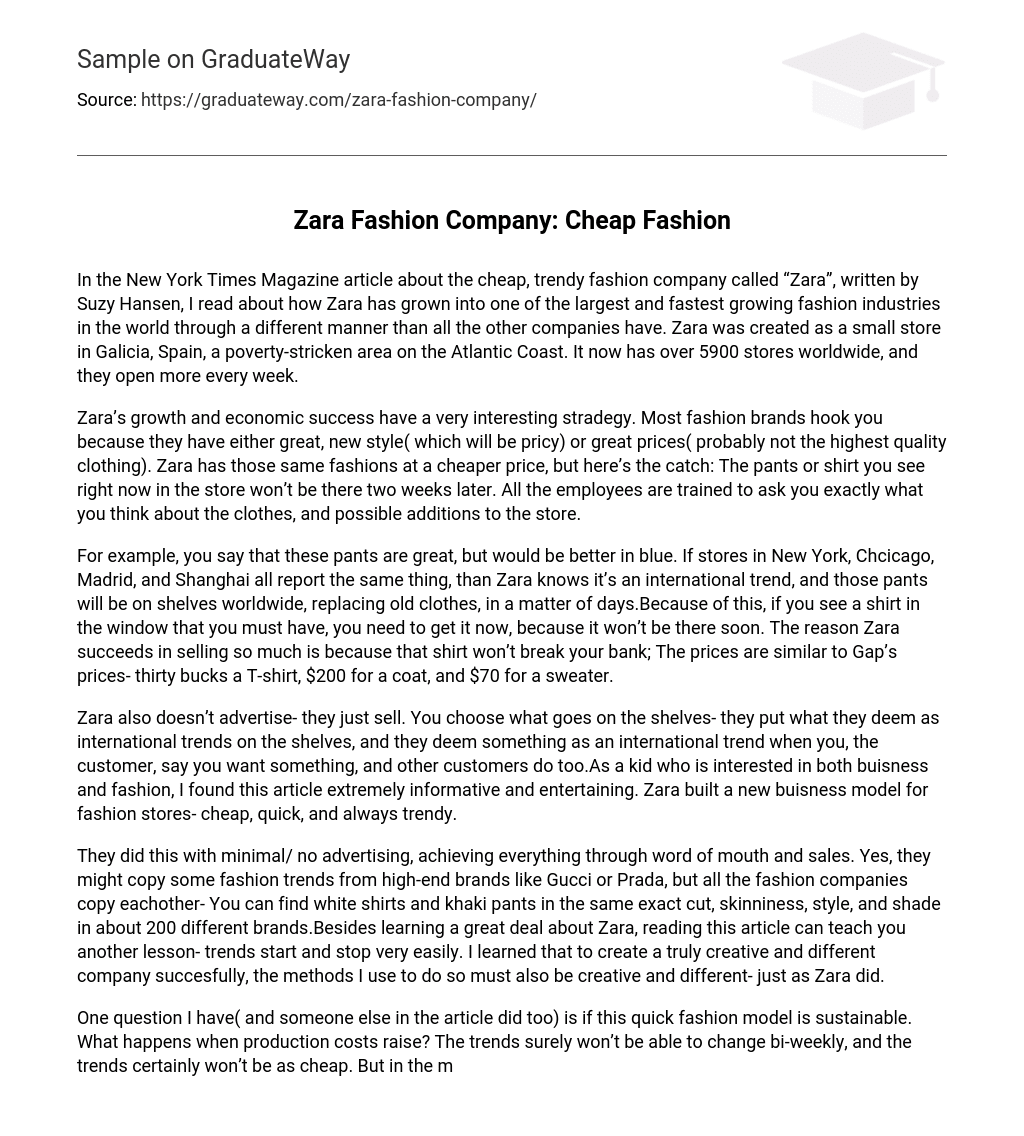In the New York Times Magazine article about the cheap, trendy fashion company called “Zara”, written by Suzy Hansen, I read about how Zara has grown into one of the largest and fastest growing fashion industries in the world through a different manner than all the other companies have. Zara was created as a small store in Galicia, Spain, a poverty-stricken area on the Atlantic Coast. It now has over 5900 stores worldwide, and they open more every week.
Zara’s growth and economic success have a very interesting stradegy. Most fashion brands hook you because they have either great, new style( which will be pricy) or great prices( probably not the highest quality clothing). Zara has those same fashions at a cheaper price, but here’s the catch: The pants or shirt you see right now in the store won’t be there two weeks later. All the employees are trained to ask you exactly what you think about the clothes, and possible additions to the store.
For example, you say that these pants are great, but would be better in blue. If stores in New York, Chcicago, Madrid, and Shanghai all report the same thing, than Zara knows it’s an international trend, and those pants will be on shelves worldwide, replacing old clothes, in a matter of days.Because of this, if you see a shirt in the window that you must have, you need to get it now, because it won’t be there soon. The reason Zara succeeds in selling so much is because that shirt won’t break your bank; The prices are similar to Gap’s prices- thirty bucks a T-shirt, $200 for a coat, and $70 for a sweater.
Zara also doesn’t advertise- they just sell. You choose what goes on the shelves- they put what they deem as international trends on the shelves, and they deem something as an international trend when you, the customer, say you want something, and other customers do too.As a kid who is interested in both buisness and fashion, I found this article extremely informative and entertaining. Zara built a new buisness model for fashion stores- cheap, quick, and always trendy.
They did this with minimal/ no advertising, achieving everything through word of mouth and sales. Yes, they might copy some fashion trends from high-end brands like Gucci or Prada, but all the fashion companies copy eachother- You can find white shirts and khaki pants in the same exact cut, skinniness, style, and shade in about 200 different brands.Besides learning a great deal about Zara, reading this article can teach you another lesson- trends start and stop very easily. I learned that to create a truly creative and different company succesfully, the methods I use to do so must also be creative and different- just as Zara did.
One question I have( and someone else in the article did too) is if this quick fashion model is sustainable. What happens when production costs raise? The trends surely won’t be able to change bi-weekly, and the trends certainly won’t be as cheap. But in the meantime, this quick fashion model is great for us middle-class people who still want to look good for cheap.





